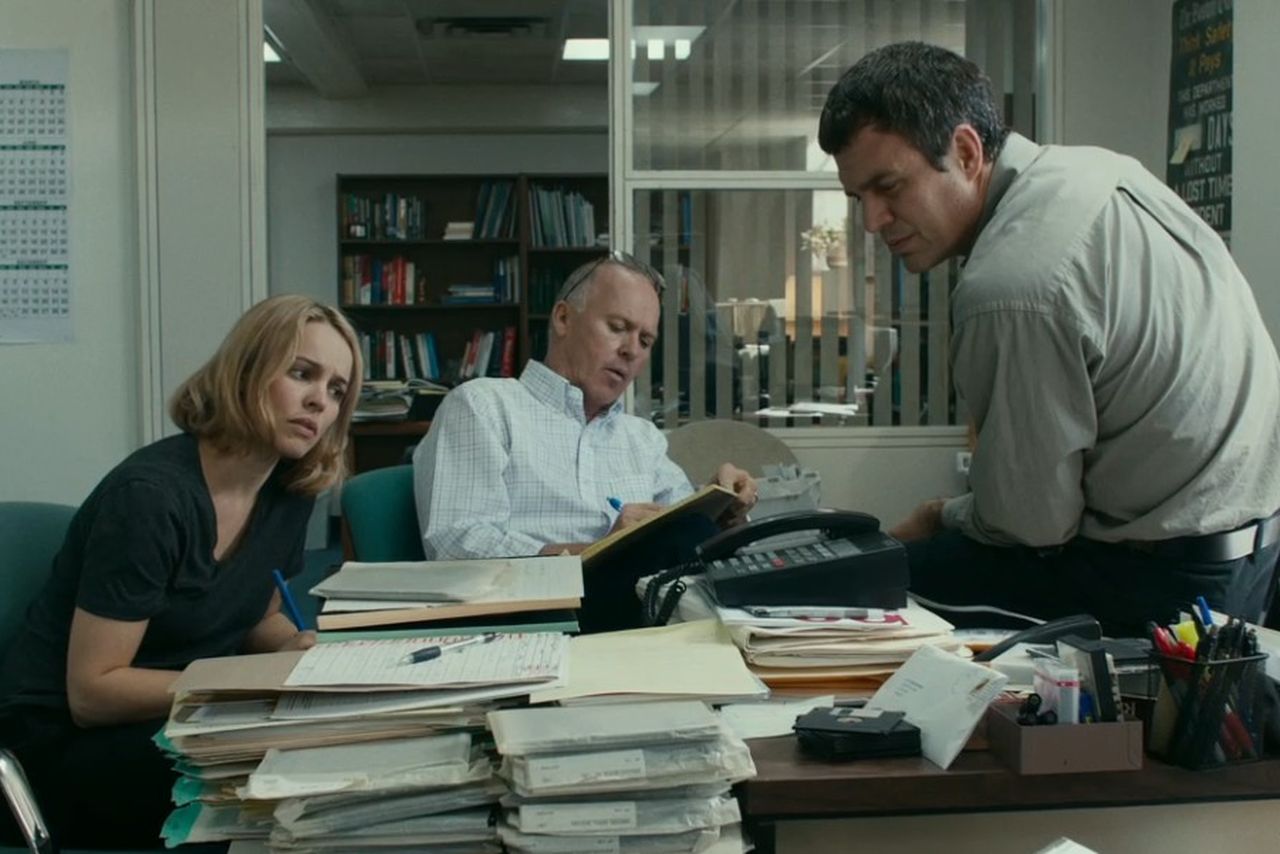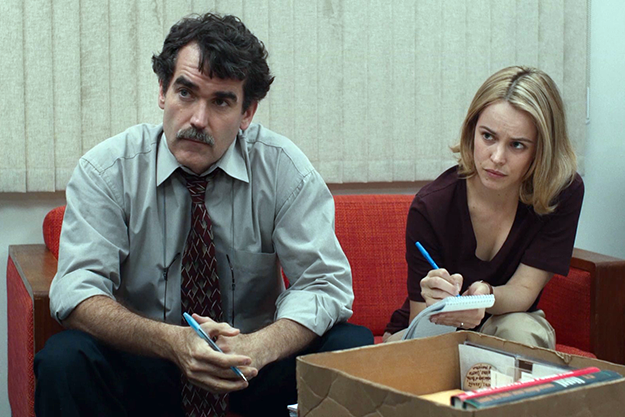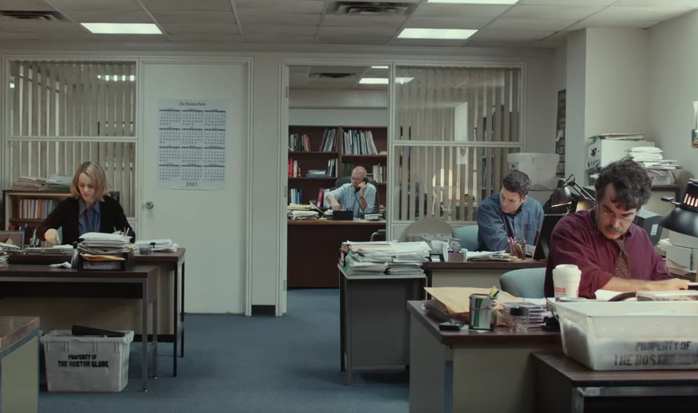How does “Spotlight” pay tribute to longform journalism?
Longform journalism today teeters between unpopularity and a sudden resurgence. Longform journalism is essay-based reporting with more content and length than typical news stories, often taking the style of narrative journalism or creative nonfiction. Today the time and money needed to support this highly skilled for of reporting are scarce, given that the media landscape is internet-heavy and geared toward readers with short attention spans, and popular websites’ styles facilitate brief content chasing after increasing clicks and web traffic. But many folks still appreciate the dedication and research put into a long, well thought-out examination and the far-reaching social effects of more sophisticated reporting. Some websites have dedicated their material to the spirit of longform.
The Boston Globe’s Spotlight division is the longest-running investigative newspaper unit in the country, and their work exposing widespread child sexual abuse cases in the Catholic church throughout the Boston area won the Pulitzer for public service in 2003. Spotlight (2015), Academy Award winner for Best Picture and Best Original Screenplay, portrays that scandal’s investigation. The film is a reverent tribute to the practice of longform journalism. Spotlight also suggests that this type of reporting isn’t dead—and if it is dying in some places, it shouldn’t be. The Village Voice writes, “the film is less an elegy for the art and craft of news reporting than a rallying cry. If journalism were really dying, how could it inspire art this vital?” The Verge agrees, saying, “it’s a film about journalism as it’s practiced in newsrooms, instead of how it’s practiced in Hollywood movies.”

Spotlight’s development was research-intensive. The filmmakers had no source material in the form of a novel or book; they could only read the newspaper’s coverage and investigate the investigation of the original team. They became their own mini-Spotlight, working to funnel through fields of data, countless interviews and hundreds of articles which the original team had printed on the subject in order to narrow down the most important details to include in the film. The process took about two years. Director Tom McCarthy applied that same level of obsessive accuracy to everything in Spotlight, from the dimensions of the team’s office to Liev Schreiber’s character’s spectacles. “It felt true to the spirit of the reporting,” McCarthy explained to The Washington Post. “When Josh [Singer] and I were spending time with these reporters and editors and discussing process, many times we walked out and I said, ‘It’s not that different than our process.’ It’s craft, right? And I think some people in Hollywood underestimate craft, that [it] takes time and development, and that it means something in this culture of the news cycle of the minute.”
During a Q&A at the DGA Theater in New York City in 2015, Tom McCarthy said “the film pays a lot of respect to high-end investigative reporting, specifically on a local level… This was a local story that had a global impact. These guys had no idea what they were getting into.” The reporters realized the gravity of their investigation and the possible implications of working against one of the largest and most iconic institutions not only in Boston, but in the world.
McCarthy said, “They opened a kitchen cabinet that turned out to be a closet, that turned out to be a storeroom, that turned out to be an airplane hangar. They were, as reporters, excited, and as human beings, horrified, at the scope of this.”

The use of title cards at the end of the film reflects the local-turned-global nature of the story, showcasing the hundreds of cities across the globe where similar systemic crimes have been committed. The Spotlight team researched the story for two full years after the moment when the film ends, with the publication of their first major exposé on the issue. It’s that dogged, sustained type of journalistic inquiry that the film respects. In the ultimate outcome of the investigation—forcing the Catholic church to own up to its long-standing, global cover-up of abusive behavior by priests—Spotlight shows the power for change possible as a result of thorough investigative reporting, as well as the ways local papers are deeply entwined with their towns, for better or worse.
Spotlight sought a tone that was blue-collar and workmanlike in nature: a tribute to craft of any kind. It shows the pre-Google days when journalists had to ask for a physical pile of newspaper clippings, crank through microfilm, print details they wanted on paper, stick it in a file and rummage through it to craft a story. The Washington Post writes, “Not only does Spotlight pay homage to a brand of journalism that, a decade later, is on the brink of extinction, threatened by rapidly shifting economic and technological forces, the movie itself also exemplifies a narrative mode that’s similarly endangered within an industry increasingly oriented toward ante-upping sequels, superheroes and special-effects spectacles.”

In the same Q&A at the DGA, McCarthy’s interviewer called the picture “an ode to longform reporting.” At the same time, though, he pointed out that the film reveals the weakness of the centralized press, in that The Boston Globe missed the story for years even after members of their staff were contacted and alerted to what was happening. While highlighting the type of resource-heavy journalism we as a modern society are losing, Spotlight also draws attention to the way that powerful entities are capable of burying or driving attention away from stories they don’t want told when only one press institution, like The Boston Globe, has the means to tell it.
Ultimately, McCarthy said at the Q&A, a healthy press is essential to a free society: “we absolutely cannot live without it. We need newspapers to hold large institutions accountable. It is heroic and invaluable.”

